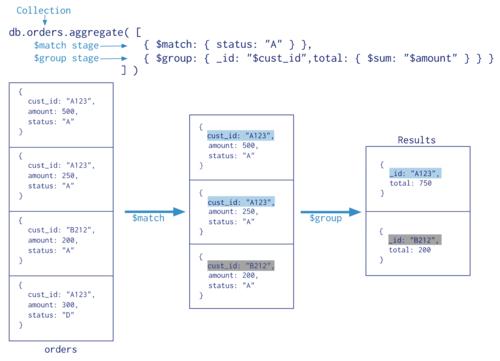目录
- 前言
- 源码
- 函数
- 最终效果
前言
encode_video:实现了对图片使用指定编码进行编码,生成可播放的视频流,编译时出现了一些错误,做了一些调整。
基本流程:
1、获取指定的编码器
2、编码器内存申请
3、编码器上下文内容参数设置
4、打开编码器
5、申请数据帧内存
6、模拟图片
7、编码
源码
测试代码,做了部分修改
#include using namespace std; #include #include #include extern"C" { #include "libavcodec/avcodec.h" #include "libavutil/opt.h" #include "libavutil/imgutils.h" #include "libavutil/error.h" } static void encode(AVCodecContext* enc_ctx, AVFrame* frame, AVPacket* pkt, FILE* outfile) { int ret; /* send the frame to the encoder */ if (frame) printf("Send frame %lld\n", frame->pts); //修改 lld 替换 PRId64 /*avcodec_send_frame 与 avcodec_receive_packet 配合使用*/ ret = avcodec_send_frame(enc_ctx, frame); if (ret = 0) { ret = avcodec_receive_packet(enc_ctx, pkt); if (ret == AVERROR(EAGAIN) || ret == AVERROR_EOF) return; else if (ret pts, pkt->size); //修改 lld 替换 PRId64 fwrite(pkt->data, 1, pkt->size, outfile); av_packet_unref(pkt); //清空数据压缩包 } } int main() { const char* filename; const AVCodec* codec; AVCodecContext* c = NULL; // 编码器上下文 int i, ret, x, y; FILE* f; AVFrame* frame; // 音视频数据帧结构体 AVPacket* pkt; uint8_t endcode[] = { 0, 0, 1, 0xb7 }; filename = "text_264"; /* find the mpeg1video encoder */ codec = avcodec_find_encoder(AV_CODEC_ID_H264); if (!codec) { fprintf(stderr, "Codec not found\n"); exit(1); } // 为编码器申请空间并设置初始值 c = avcodec_alloc_context3(codec); if (!c) { fprintf(stderr, "Could not allocate video codec context\n"); exit(1); } pkt = av_packet_alloc(); if (!pkt) exit(1); /* put sample parameters */ c->bit_rate = 400000; /* 分辨率 为2的倍数 */ c->width = 352; c->height = 288; /* frames per second */ c->time_base.num = 1; c->time_base.den = 25; //帧率 c->framerate.num = 25; c->framerate.den = 1; /* emit one intra frame every ten frames * check frame pict_type before passing frame * to encoder, if frame->pict_type is AV_PICTURE_TYPE_I * then gop_size is ignored and the output of encoder * will always be I frame irrespective to gop_size */ c->gop_size = 10; c->max_b_frames = 1; //非B帧之间的最大的B帧数 c->pix_fmt = AV_PIX_FMT_YUV420P; //像素格式 if (codec->id == AV_CODEC_ID_H264) av_opt_set(c->priv_data, "preset", "slow", 0); //设置属性 /* open it */ ret = avcodec_open2(c, codec, NULL); if (ret format = c->pix_fmt; frame->width = c->width; frame->height = c->height; ret = av_frame_get_buffer(frame, 0); //申请数据帧缓冲区 if (ret height; y++) { for (x = 0; x width; x++) { frame->data[0][y * frame->linesize[0] + x] = x + y + i * 3; } } /* Cb and Cr */ for (y = 0; y height / 2; y++) { for (x = 0; x width / 2; x++) { frame->data[1][y * frame->linesize[1] + x] = 128 + y + i * 2; frame->data[2][y * frame->linesize[2] + x] = 64 + x + i * 5; } } frame->pts = i; /* encode the image */ encode(c, frame, pkt, f); } /* flush the encoder */ encode(c, NULL, pkt, f); /* Add sequence end code to have a real MPEG file. It makes only sense because this tiny examples writes packets directly. This is called "elementary stream" and only works for some codecs. To create a valid file, you usually need to write packets into a proper file format or protocol; see mux.c. */ if (codec->id == AV_CODEC_ID_MPEG1VIDEO || codec->id == AV_CODEC_ID_MPEG2VIDEO) fwrite(endcode, 1, sizeof(endcode), f); fclose(f); avcodec_free_context(&c); av_frame_free(&frame); av_packet_free(&pkt); return 0; }函数
1、int avcodec_send_frame(AVCodecContext *avctx, const AVFrame *frame);
向编码器发送音频或视频的数据包与
int avcodec_receive_packet(AVCodecContext *avctx, AVPacket *avpkt);配合使用
成功返回0
2、av_err2str(errnum)
编译会报错
修改:
char av_error[AV_ERROR_MAX_STRING_SIZE] = { 0 }; #define av_err2str(errnum) \ av_make_error_string(av_error, AV_ERROR_MAX_STRING_SIZE, errnum)最终效果










